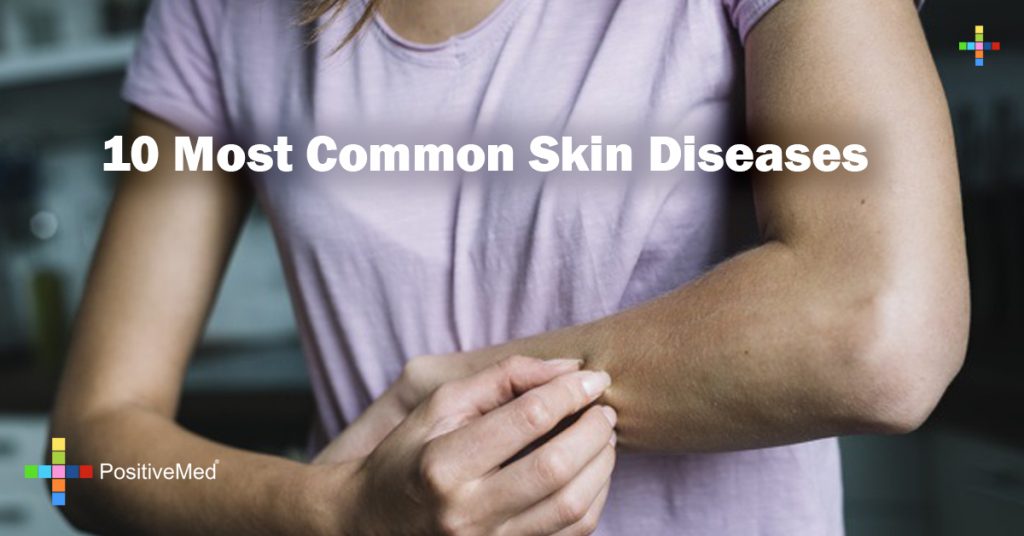
10 Most Common Skin Diseases
Our skin is a key organ as it covers our entire body. It is the largest organ and serves many important functions, it protects our inner body and regulates body temperature, as well as storing water, fat, and vitamin D. There are three layers of skin; the epidermis, dermis, and subcutaneous layer.

All three layers can have the following skin problems:
1. Acne Per Mayo Clinic, acne is the most common skin problem, and 80% of the population has had acne at some point in their life. These are small red pustules that occur when our skin’s oil glands and pores become clogged and inflamed. It is most common in adolescents but can happen throughout adulthood.
2. Hives Hives occur as a result of an allergic reaction. You can see the appearance of welts that are itchy, or sometimes burning and stinging. The welts can be of different sizes and they can join together to form larger ones. They can occur anywhere on your body and can last from a few minutes to several days. The most common causes are foods, infections, and medications.
3. Psoriasis This is a skin disease that causes swelling and scaling, usually thick red skin patches with silvery scales are seen. These skin patches may itch or feel sore. In the US around 2% of the population has psoriasis. It can happen at any age, but is most common in the 30’s. The patches most often occur on the elbows, knees, legs, face, palms, scalp, lower back, and sole of the feet. Treatment of psoriasis depends upon the severity of the disease. The causes are unknown, however it occurs when our immune system causes new skin cells to produce rapidly.
4. Liver or Age Spots Usually people think these spots occur as we age, but they are actually caused by sun exposure. The color of the spots may be brown or grey and occur on the face, hands, arms, and other places where the skin is exposed to the sun. Use a good sunscreen as a prevention tool.

5. Rosacea Rosacea is a chronic inflammatory disease that happens in adults. Signs include frequent redness or flushing of the face and small bumps or pustules that resemble other skin conditions like acne, they usually occur in cycles. There is no cure for this disease but treatments exist.
6. Skin Tags Skin tags are small flaps of tissue that hang from the skin by a stalk. They can be dark or flesh-colored and are found on the neck, armpits, back, chest, under the breasts, and groin area. Elderly people and women are more prone to this skin condition. They do not cause pain or discomfort and are not dangerous unless they are repeatedly shaved and caused to bleed.
7. Moles Moles are small growths on the skin produced by clustering of melanocytes or pigment. They are common and usually harmless, but can develop into melanoma. Most often moles are small, dark brown spots on the skin, but they can be a variety of shapes, colors, and sizes. Interestingly they are often considered ‘beauty marks.’
8. Melanoma This is life-threatening skin cancer, and is the 8th most common malignancy in the United States, per Cleveland Clinic. It occurs in skin cells that produce melanin, the pigment responsible for skin color and most often occurs to the areas exposed to sunlight. It’s important to care for your skin and monitor spots and color or shape changes and growth.
9. Skin cancer Two more severe forms of skin cancer are basal cell and squamous cell carcinoma. They are most common in the United States and are highly curable if treated at an early stage. As in all skin conditions, preventing your skin from harmful UV rays is the best way to prevent these diseases.
10. Eczema With eczema our skin becomes dry, itchy, red, and inflamed. The causes of eczema are unknown, however, some irritants, allergens, and stress may be responsible for this disease. It’s usually seen on elbows, hands, and the inside of the elbows or back of the knees.






